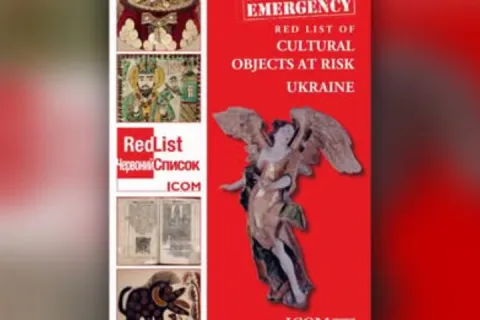Work on the extraordinary Red List of Endangered Cultural Heritage of Ukraine has been completed
The Red List is published in English (translations into Ukrainian, French and Swedish are in preparation) and will be distributed to authorities and law enforcement agencies in Ukraine and Europe.
The Red List is one of the tools for combating the illegal trafficking of cultural heritage objects that ICOM has been publishing since 2000. The list includes categories of cultural objects from a given region that can potentially be stolen, exported and sold in the future. Such a tool is designed to help authorities, police and customs officials, individuals or organizations involved in the art market in one way or another, identify objects at risk and prevent their illegal sale or export. The Red Lists are created in cooperation with national and international experts, with the aim of covering the regions of the world most vulnerable to the illicit trafficking of cultural objects.
It is important to note that the Red List is not a list of objects that have already been stolen. The photos on the lists depict items from museum collections that are most vulnerable to illicit trafficking.
This is the first Red List, which was created during the war. It should be recalled that work on the compilation of the Emergency Red List for Ukraine by ICOM of Ukraine, together with museum experts in cooperation with the ICOM Department of Conservation, began in April.
International cooperation is essential for combating the illicit movement of cultural heritage. The International Council of Museums - ICOM cooperates with national and international law enforcement agencies, including Interpol and the World Customs Organization.
ICOM also continues to encourage the ratification of international cultural conventions, such as the 1970 UNESCO Convention, the 1995 UNIDROIT Convention, as well as bilateral agreements between states, which are vital for combating illicit trafficking.
ICOM and its experts not only sincerely hope that this tool will help police, customs officers, researchers and private citizens in identifying cultural heritage at risk, as well as intercepting the illicit trade in looted and stolen objects, but also that it will contribute to the preservation of Ukraine's cultural heritage.
